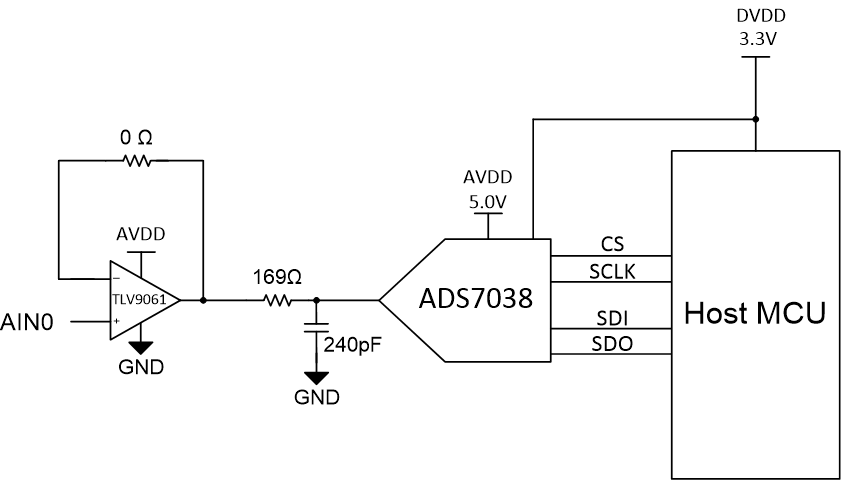SBAU279 October 2020 ADS7038-Q1
- Trademarks
- 1Introduction
- 2ADS7038Q1EVM-PDK Overview
- 3ADS7038Q1EVM-PDK Initial Setup
- 4Input Signal-Conditioning Circuitry on the ADS7038Q1EVM
- 5Bill of Materials, Printed Circuit Board Layout, and Schematics
4 Input Signal-Conditioning Circuitry on the ADS7038Q1EVM
For applications where the input signal requires additional conditioning or drive strength before the ADC input, the ADS7038Q1EVM has an onboard ADC path on channel 0. The input signal header, J5 is connected to the amplifier input, TLV9061. By default, this signal-conditioning block is populated on the evaluation board as a non-inverting buffer using the TLV9061 device. The board has a provision to bypass the operational amplifier (U5) based on the signal conditioning requirement. To bypass this block, remove the R21 0-Ω resistor and populate R26. See the Schematics section for more details. Figure 4-1 displays a simplified CH0 input drive circuit.
 Figure 4-1 Channel 0 Input Signal Buffer Circuit.
Figure 4-1 Channel 0 Input Signal Buffer Circuit.